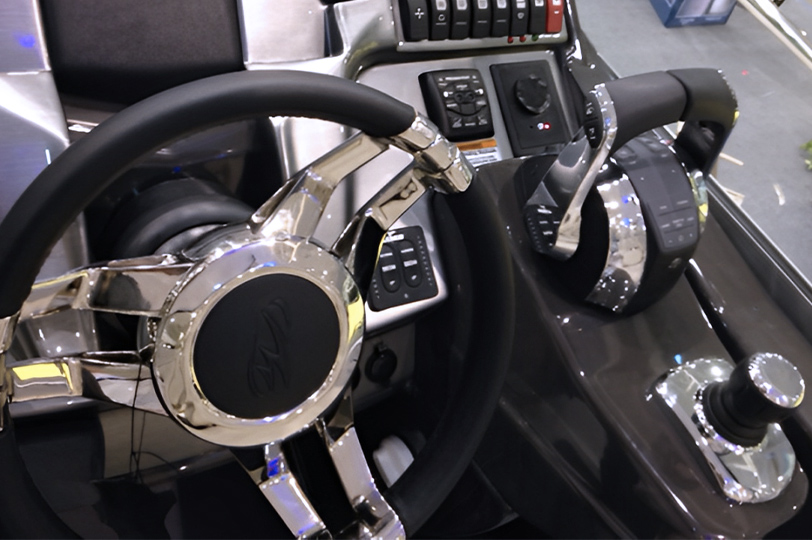Plastic production has soared since 1950 when its commercial use was first recorded statistically, to reach 390.7 million metric tons in 2021. The incredible versatility of this material category accounts for its widespread adoption. While this production figure tallies all plastic production categories for consumers and industrial use, one increasingly popular sector is the reliance on plastic injection molding to replace metal parts.
Weighing the Options Between Metal and Plastic Parts
Historically, the use of metal dates back thousands of years to ancient civilizations such as the Mesopotamians, Egyptians and Greeks. In the modern era, steel reigned for decades due to its strength and durability, laying the foundation for the modern age. Widespread use over the course of millennia has created a wealth of knowledge about its characteristics, perceived quality, and its functional properties.
However, with the advent of engineered polymers, numerous applications in multiple industries find advantages in replacing some metal parts with counterparts made of plastic instead. Standout industries that have turned to engineered polymers for a variety of parts and projects includes automotives, aerospace, medical instrumentation and more.
While both types of materials will remain indispensable when fabricating equipment or transportation such as an aircraft, modern plastics supply opportunities to create parts that were unthinkable a few decades ago. In addition, plastics can help reduce part weight, cost and production time compared to metal parts.
The Advantages of Industrial Plastics
Although metal-to-plastic conversion has been around for decades, many manufacturers, commodity managers, and engineers aren’t familiar with the benefits. With proper design, engineered plastics and high-performance resins can be just as strong as metal. According to the American Society of Mechanical Engineers, “in general, companies can expect to achieve an overall cost savings of 25% to 50% by metal to plastic conversion.
Key Factors that Drive Metal Replacement
When switching from metal to plastic, several factors can help manufacturers choose the right material. Among the critical factors to consider there are:
- chemical compatibility
- durability and strength
- UV exposure and resistance
- electrical conductivity or insulative properties
- overall systems cost
- part weight
- desired product performance.
Ferriot engineers suggest using Design for Manufacturing and Assembly (DFMA) to evaluate and create product designs that are easy to assemble and manufacture when making a metal to plastic substitution. DFMA is most effective during a product’s early stages, when it’s easier to make changes and has the greatest impact. Some of the key questions to ask would include:
- Is there a potential for parts consolidation?
- Are there quality or ergonomic issues?
- Are the current assembly operations too complex or expensive?
These are all important questions to examine or answer during a project overview or as part of a systematic approach. An analysis of the answers is critical for a successful metal to plastic conversion.
Benefits of Metal-to-Plastic Replacement
Engineered polymers have proven extremely effective in supplanting conventional materials in uses where they can offer benefits through enhanced performance at reduced system expenses. Here are some of the benefits of replacing metal parts with plastic ones:
- Weight Reduction: Plastics are significantly lighter than metals, leading to weight savings in products and potentially improving fuel efficiency in transportation applications.
- Cost Savings: Plastic parts can often be produced more cost-effectively than their metal counterparts due to reduced material costs, faster production cycles, and minimal assembly requirements.
- Improved Design Flexibility: Plastics offer greater design freedom, allowing for complex geometries and intricate part features that may be challenging or costly to achieve with metal.
- Corrosion Resistance: Plastics are naturally resistant to corrosion, eliminating the need for expensive coatings or treatments that metals may require in harsh environments.
- Reduced Assembly and Secondary Operations: Plastic parts can be manufactured with features like snap fits, reducing the need for additional assembly steps. In-mold decorating technologies also eliminate secondary operations like welding or painting.
- Enhanced Safety: Plastics can offer improved safety characteristics, including impact resistance and non-conductivity, making them suitable for applications where safety is a concern.
- Blending to Meet Specifications: Plastics have a broad spectrum of chemical formulas each having different beneficial traits. Engineering resins are then the blending of these basic resins to provide yet additional optimized properties.
- Longer Product Life: High-performance resins are corrosion resistant, which reduces the need for secondary coatings and sprays.
- Design Freedom: Plastics provide the flexibility to use complex geometry.
These benefits highlight the advantages of metal to plastic conversion, making it an attractive option for various industries seeking cost-effective, lightweight, and high-performance solutions.
What are the Advantages of Plastic Injection Molding?
Plastic injection molding is a highly versatile manufacturing process that offers numerous advantages when compared to working with metal. It allows for intricate and complex part designs with tight tolerances, enabling the creation of custom components tailored to specific applications.
Injection molding is a cost-effective method, particularly for large production runs, as it minimizes material waste and reduces labor costs associated with assembly and finishing. Additionally, plastics produced via injection molding can offer benefits such as lower weight, corrosion resistance, and a broader range of material options, including engineering-grade resins and commodity grades.
Moreover, plastic injection molding can significantly reduce lead times and tooling costs compared to processes involved with metal fabrication. This makes plastic injection molding a preferred choice for industries seeking efficient, lightweight, and cost-effective solutions while maintaining high-quality product standards.
Resin Selection a Key for Metal to Plastic Conversion
Understanding physical performance and cosmetic requirements of the product to be manufactured is key when selecting from the numerous resins available for injection molding production. Here is a partial listing which includes engineering grade and commodity-based resin.
Engineering Grade Resins:
- Nylon: Tough, chemically resistant, wide range of physical properties.
- Polycarbonate: Strong, transparent (for lenses), available in multiple colors.
- ABS: Lends good surface quality, impact strength and rigidity, with the ability to select finished product colors.
- PC/ABS: Good processability, toughness at low temperatures, stable dimensions.
- TPE: Soft touch, rubber-like properties, tear strength, flexibility.
- Acrylic: Transparent, suitable for some outdoor applications.
- Acetal: Excellent wear resistance, ideal for gears and high-wear applications.
- Structural Foam: Great for metal replacement, offers a good weight-to-stiffness ratio.
Commodity Grades:
- Polypropylene: Versatile, various grades, good fatigue and chemical resistance, cost-effective.
- Polyethylene: Highly versatile, low-cost, various grades (LLDPE, LDPE, HDPE), tough, weatherable.
- Polystyrene (PS): Available in general purpose and high impact, cost-effective, varying impact resistance, good clarity in GPPS grades, rigidity.
- Polyvinyl chloride (PVC): Affordable resin option that offers good chemical resistance and environmental tolerance (weathering). Is naturally flame retardant and can be dyed for a selected color.
Companies looking for more help with resin selection, to help make a switch from metal to plastic, can reference this guide published by Ferriot to help our customers walk through the possibilities.
The most impactful metal replacement successes typically require a cross-functional team reviewing an entire subsystem, rather than a one-for-one replacement. If you have a question about where plastic injection molded parts could help your finished project reduce weight, improve strength or help cut costs without impacting quality, give us a call. We can help you with metal to plastic conversion projects.

Want to learn more about metal to plastic conversions? Discover how we tackled complex challenges when a fuel pump original equipment manufacturer (OEM) was seeking savings through a durable plastic conversion here.



